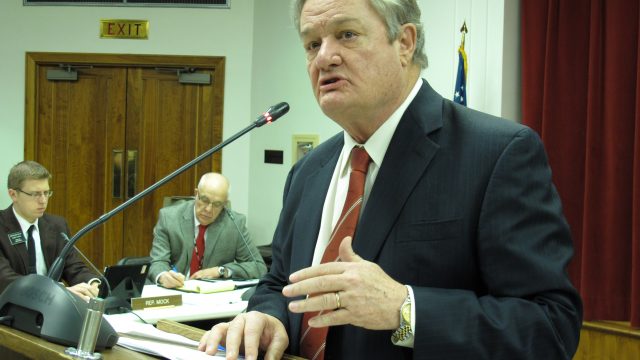Will North Dakota Need Another Round Of Budget Cuts?

I was speaking with some lawmakers over the weekend about the state’s budget situation. In case you haven’t seen the headlines, falling oil and agriculture prices have translated into falling tax revenues for the state. A new revenue forecast released earlier this month showed a more than $1 billion shortfall, something Governor Jack Dalrymple made up for by draining the state’s “rainy day” fund of nearly half a billion dollars and ordering 4.05 percent across-the-board spending cuts.
I’m not sure those spending cuts are as painful as some are making them out to be. I mean, when has any department of government seen its spending reduced without cries of anguish? And it’s funny that a 4.04 percent allotment is this really big deal, but somehow the state’s average 36 percent biennial increase in general fund spending since 2005-2007 was accepted as though it were business as usual.
[mks_pullquote align=”right” width=”300″ size=”24″ bg_color=”#ffffff” txt_color=”#000000″]One Republican lawmaker told me there’s a “better than 50 percent chance” of another round of allotments.[/mks_pullquote]
The size of the general fund budget has more than tripled from the 2005-2007 biennium through 2013-2015. With demands for state services shrinking as the oil boom fades, I think 4 percent cuts shouldn’t be that hard.
In fact, some lawmakers are telling me that the allotments should have been a great deal bigger, and that Dalrymple going small with the cuts may necessitate more cuts later this year.
One Republican lawmaker told me there’s a “better than 50 percent chance” of another round of allotments.
He added that Dalrymple took too much money out of the Budget Stabilization Fund (the “rainy day” fund). While that allowed for Dalrymple to keep the allotments relatively low, it also means that the Legislature will have to fill the fund back up again in the next biennium with a new governor (Dalrymple has announced he’s not running for re-election).
State law requires that the BSF be funded with 9.5 percent of general fund appropriations. The only penalty if there isn’t enough in the general fund to meet that requirement is that the BSF will not deposit its interest earnings back into the general fund. But are lawmakers really going to want to head into another biennium of economic uncertainty without a fully funded “rain day” fund?
Probably not.
Which means that Dalrymple draining the fund this biennium is kind of like using future revenues to meet current obligations.
I think many lawmakers feel it would be better cut more now, and leave less budget pain for later, than to protract the pain with more modest cuts. Especially when the Governor has the authority to restore spending by reversing the allotments if revenues recover.




